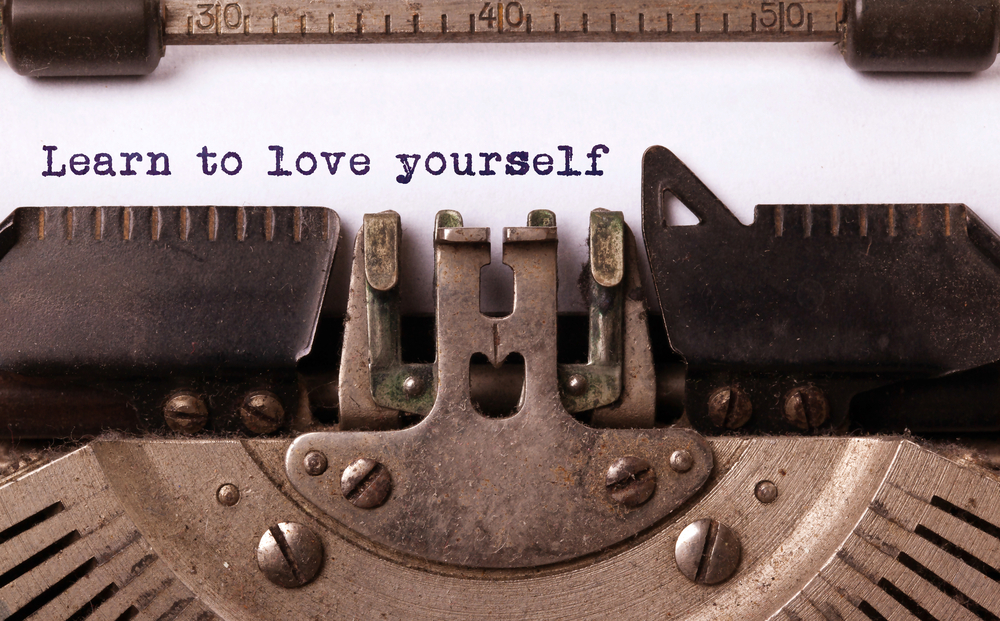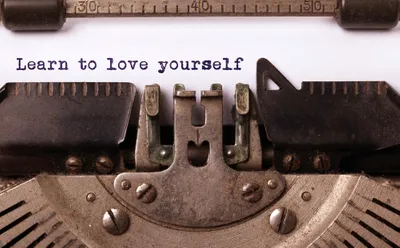Loving your body is necessary to be truly healthy and happy, yet it’s too easy to find fault with your body. There are huge misconceptions about what people think they should look like. This is largely due to the entertainment and modeling industry, where they load on the makeup, get the perfect angle for the picture or video, and use programs to remove and alter any and all things they consider imperfections. Wrinkles, cellulite, stretch marks, sun spots, birth marks, laugh lines—everything that shows you’re alive and well seems to be deemed ugly or unacceptable, so it’s fairly common for men and women young and old to have confidence and body images issues.
But it’s never too late to change your outlook and be proud of yourself. Try out the following ten ways to learn to love your body…
1. Acknowledge No One’s Perfect
Contrary to popular belief, no one is perfect—and really, who wants to be? Everyone is unique, something that should be embraced instead of feared. Yet societal pressures, the beauty industry, and unhealthy personal relationships can make you strive to be something you’re not, eventually causing low self-esteem and negative body image issues. Breaking free and rising above these things is a vital part of learning how to love your body. Without doing so, you’ll be trapped in a cycle of negativity, reaching for something that doesn’t exist.
How do you acknowledge no one’s perfect and that imperfections don’t take away from your natural beauty? A lot of it is about changing your attitude and ridding the thought that perfection and beauty are entwined—and that perfection is even something to strive for. Instead of trying to be someone you aren’t, differentiate yourself by owning the things that make you unique. Once you stop trying to be perfect, you’ll be able to build confidence in who you are and what you look like.
2. Accept What Can’t Be Changed
Much of the journey to learn to love your body revolves around your thoughts, specifically learning to accept and love what makes you you. While lifestyle habits can be changed to help you fully achieve loving your body, making emotional changes are just as or even more so important. And something many of us struggle with is mentally accepting what can’t be changed. Of course it’s good for your health and frame of mind to exercise regularly and follow a balanced, healthy diet, but there are things that simply can’t be changed no matter how healthy you are or how hard you try.
From the little things like freckles, wrinkles, crooked teeth, or a bump on your nose, to the bigger, self-proclaimed problems like stretch marks, wide hips, or extra weight around your belly that just won’t go away, put effort into accepting these parts of your body. Some of these are impossible to change without surgery, and many are simply the cause of genetics. Either way, you don’t benefit from focusing on things you can’t change. Instead, acknowledge how poisonous these thoughts are and actively work to banish them.
3. Challenge Yourself
Negative thinking can become so ingrained that you end up believing your body has endless flaws and problems that aren’t true. This inevitably causes your self-esteem and self-confidence to plummet. Your perception of what’s good or bad is self-destructive, and will take a serious toll on you. Eventually, your lack of confidence and the negative and harmful thoughts about your body will hurt your health, as well as relationships. How you feel about your body will cause you to make choices and act a certain way, causing real harm from something it shouldn’t.
One way to learn to love your body is through challenging yourself. When you have moments of weakness and think negatively about your body, challenge the thoughts going through your head. It’s amazing how negative we can become, convincing ourselves that what we think is true. Always challenge those thoughts. Another way to challenge yourself is to take risks and put yourself out there in other areas of your life, like at work or with a possible partner. Taking chances can make you feel good about yourself, in turn helping to build you back up.
4. Flatter Yourself
Once you’ve challenged your negative thoughts, there’s a rational next step—learn how to flatter yourself, and keep flattering yourself regularly. In fact, there’s no need to ever stop recognizing what you love about your body. Doing so will help you stay positive, and keep you in a good frame of mind to make healthy choices and work hard for things you’re passionate about. Acknowledging things you should be proud of and love about your body is a refreshing feeling when you get past your insecurities.
Try banishing the negative, untrue thoughts and take a good, hard look at yourself. You might be surprised at how beautiful you feel when you really see and embrace your body. Things you once thought made you less beautiful might be some of the features you learn to love most—your hourglass figure will no longer make you feel too wide in the hips or chunky around the waist, and instead you’ll see a beautifully shaped figure that many people covet. So encourage the compliments you have for your own body, and love it like you should.
5. Create Reminders
Regular reminders can help you learn how to love and keep loving your body. Write positive things down on paper or electronically, such as compliments about your body, inspirational quotes, and positive words that make you feel good. Writing reminders can be quite effective, especially in the beginning when you’re first making changes and challenging yourself to think differently. If you have trouble figuring out what to write, search the internet for positive quotes and words. Even social media is regularly filled with positive sayings, so check there too.
Keep these reminders in places you regularly go or access, like your bathroom mirror or night stand drawer. At work, place a note in your desk or print off positive quotes to hang in your cubicle. You can also set reminders up electronically by scheduling notifications to pop up in your calendar, or visit a website with daily motivation that you read before you start your day. Do what works for you, and keep doing it even after you’ve mastered how to love your body—reminders can keep you on track.
6. Eat Right
Extreme diets aren’t the right direction to go when trying to love your body. These diets imply you need to make big changes and cut out several foods in order to be happy with the size of your body or to meet a serious misconception that being skinny is what you should reach for. Instead, improve your body image and build your self-esteem by eating right—follow a balanced, healthy diet that focuses on portion control, healthy foods rich in vitamins and nutrients, and indulging in moderation.
Though many are skeptical, it most definitely is possible to be healthy and maintain a healthy weight without extreme dieting. And way too often we see people doing crash diets that end up hurting their health. Or the weight that came off from the diet is gained back as soon as they go off the diet. Either way, your best bet at a healthy body and feeling positive about yourself is through a balanced diet. You’ll likely naturally lose some inches in many areas of your body, and feel better overall. A healthy diet can do wonders to how you feel about yourself.
7. Exercise Regularly
Exercising isn’t just about building muscle, burning fat, losing weight, and increasing flexibility. It’s great to have fitness goals but the ultimate goal should be that you’re working towards being fit and healthy, boosting your self-esteem, and changing the way you see your body, especially if what you see is negative. Exercise is a powerful way to learn to love your body, as long as you’re doing it for the right reasons.
If you exercise to fit into an often impossible mold of what the perfect body looks like, you’re going to be unhappy while you’re doing it and crash hard when you fail. The problem with trying to be someone you’re not is that you can’t. So do it for yourself, for your physical and mental health. Exercising regularly will make you fit and the endorphins from working out are a powerful mood booster. And the happier you feel, the less judgemental you’ll be about your body. If you struggle with working out regularly, try a new class, work out with a friend, or create small goals along the way to keep you focused.
8. Avoid Stress Impulses
This is a multifaceted problem that a lot of people get bogged down from. Stress impulses happen when you’re feeling down and stressed from something, one of which is how you look and feel about your body. These impulses could be range from overeating and eating unhealthy foods for days on end, to drinking too much or experimenting with drugs. People heavily rely on these bad habits, and they unfortunately only end up making you feel worse in the long run. At the time, giving into a stress impulse might seem necessary but it’s never a good idea.
When you rely on things that are bad for you, your perception of yourself is bound to be negative. Whether you’re hungover or find you no longer fit in your jeans after binge-eating, you won’t be feeling good about your body. This makes it even more difficult to break bad negative perceptions and even feelings of hate about yourself. So before you pick up that bottle or buy chocolate in bulk, think about how you’re going to feel and what it’s going to accomplish. Avoid stress impulses as best you can.
9. Surround Yourself With Positive People
The people around you have an impact on you—negativity from others can bring negativity in your life, making you question choices you make and how you feel about yourself. Some people might be able to completely block out how other people feel or how they’re acting, but that’s certainly not the norm or easy to do. So for situations that you can control who’s around you, choose people who are positive, engaging, and supportive.
Being around positive people can also give you a certain level of encouragement and support in regards to your quest to learn to love your body. If you’re comfortable, share your struggles with close friends or family who you know are positive and will help in any way they can. Even the simple but often difficult act of sharing can ease some of the negativity you feel towards your body. You might also be surprised to find out that others who you believed are confident are struggling with the same thing you are. So focus on filling your life with positive people and ridding yourself of poisonous relationships that will only bring you down.
10. Bounce Back
It can take a lot of work to learn to love your body, and at times, you’re going to be knocked off-kilter. But know that it’s temporary and happens to everyone, even the most confident and self-assured. Recognizing that you’ll be challenged once and a while will prepare you for when you’re feeling down or something happens that makes you second guess yourself. If you remember that life will throw you curve balls and do its best to knock you down, you can better divert your attention and focus on the good things instead of allowing the negative emotions to take over and last.
Just remember that you can do something about how you feel. Having learned how to love your body before, know that you succeeded once and can do it again. Be proud of who you are and everything you’ve accomplished, and use a similar approach as the first time since it obviously worked. You’ll work hard when you learn to love your body, and the memory of when you finally learned to love your body can be what pushes you to bounce back. Get up and try again.













